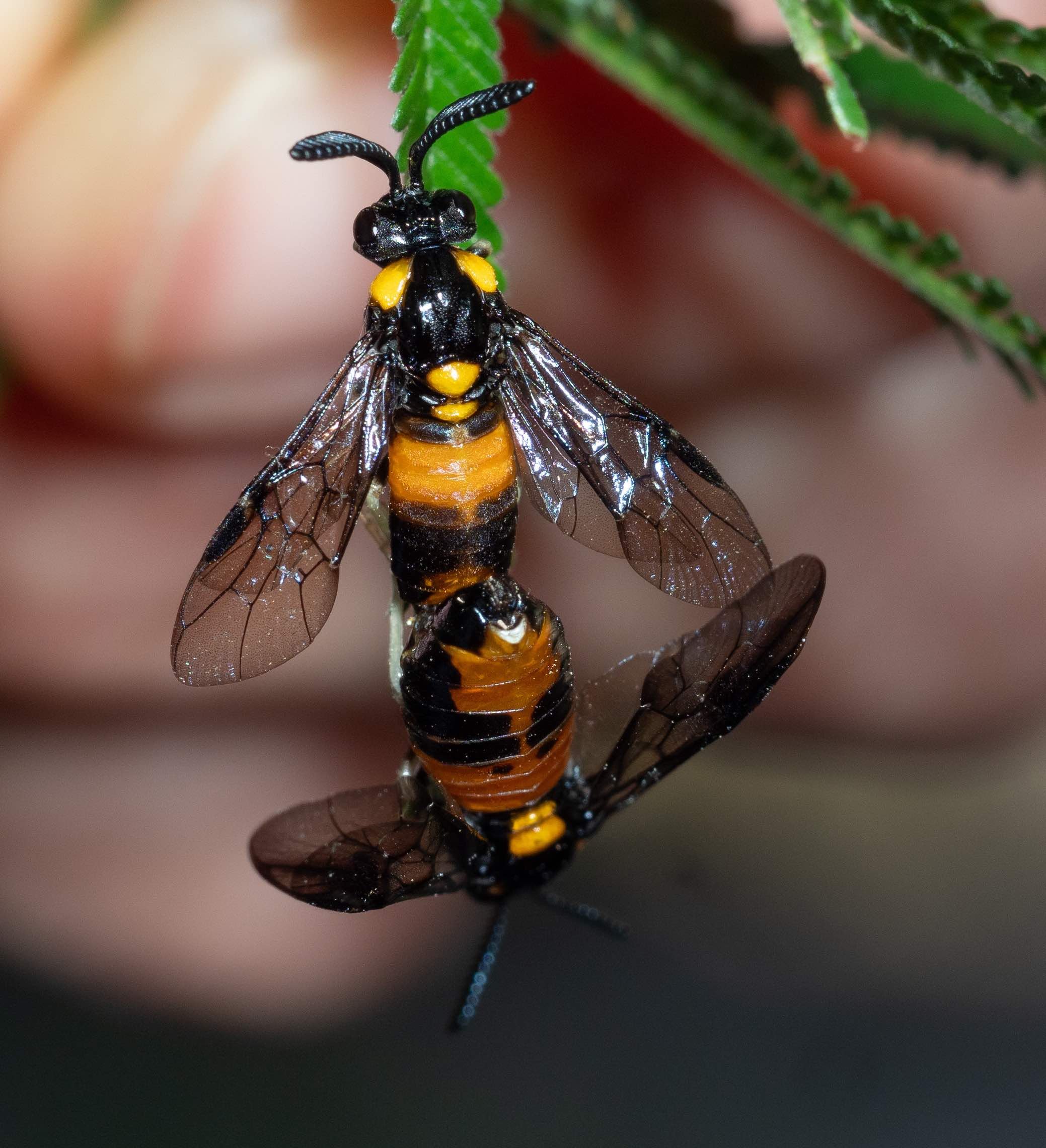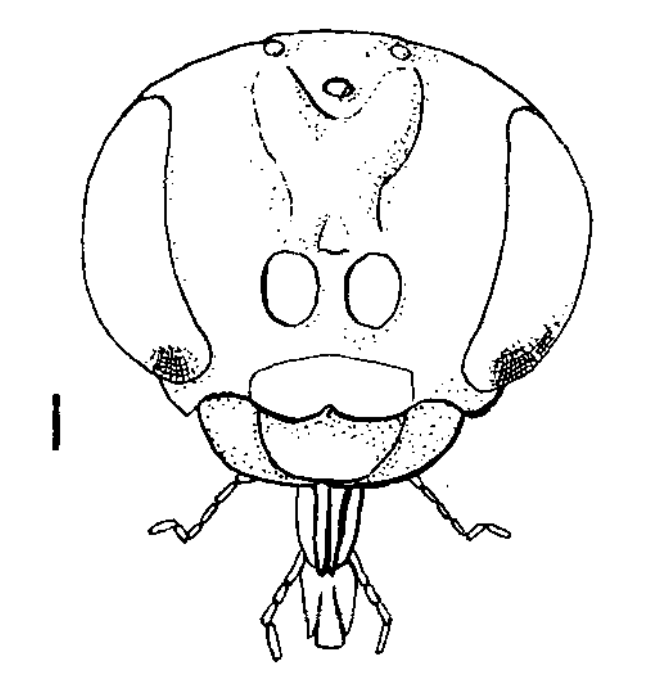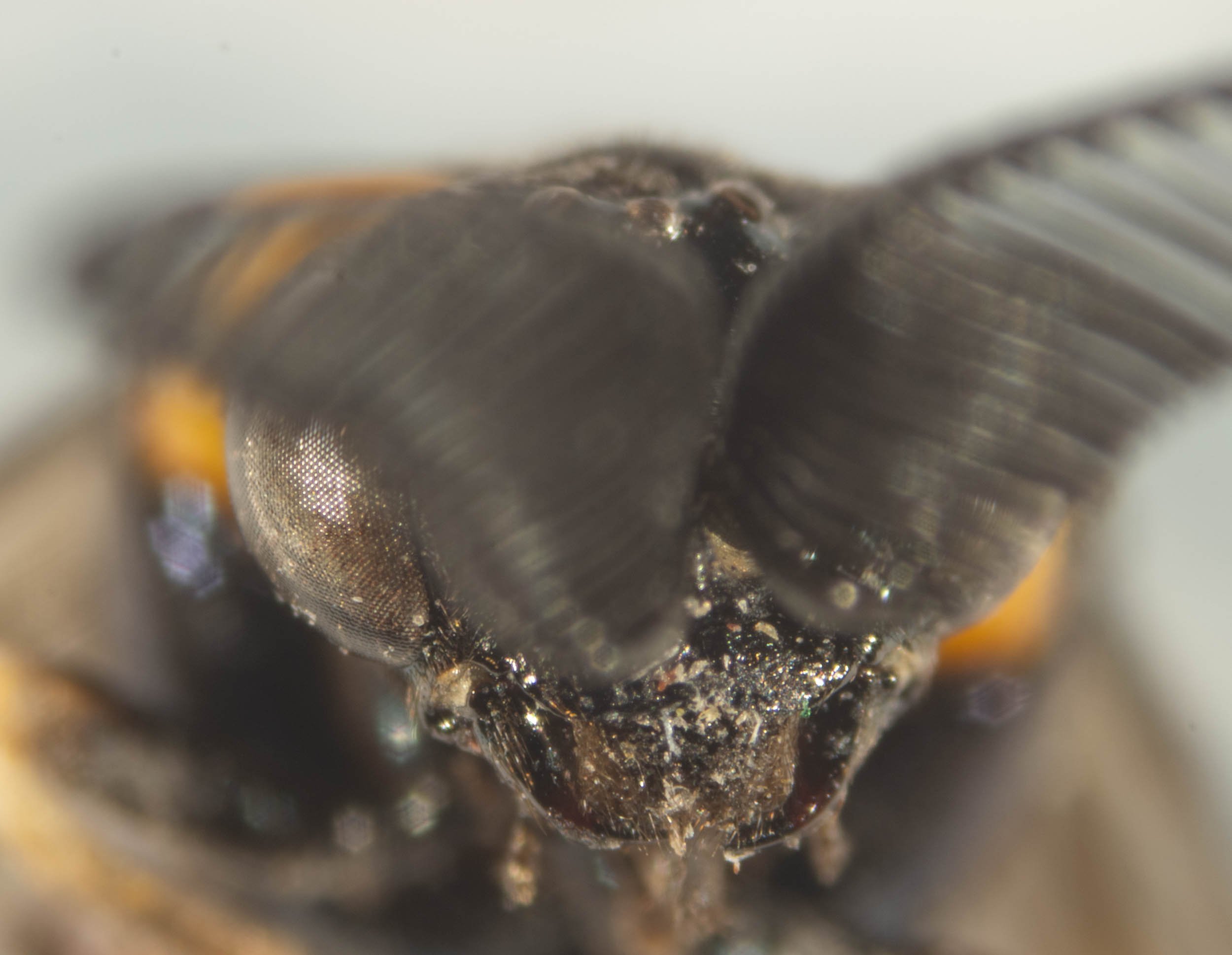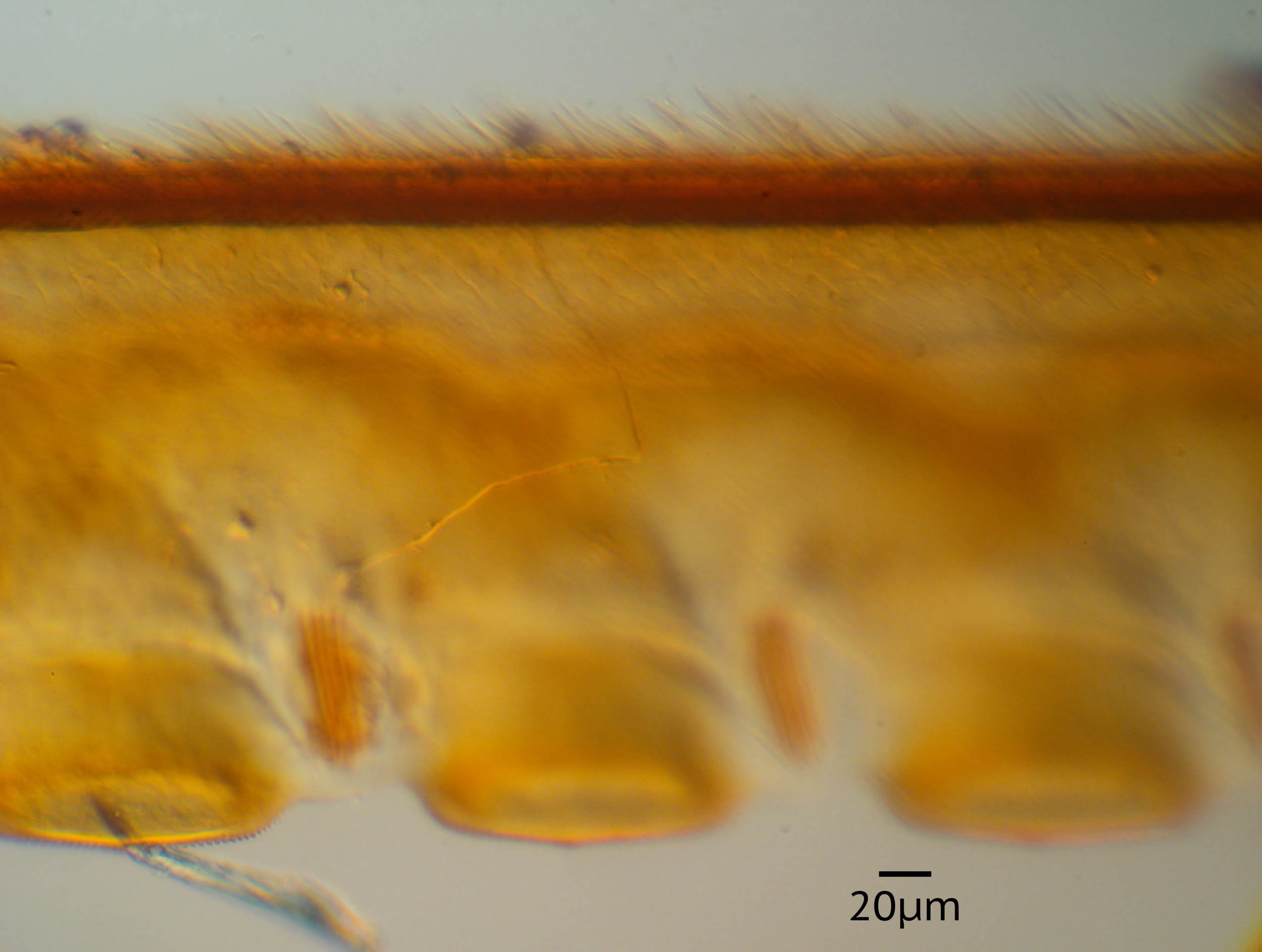Lophyrotoma interrupta (Pergidae: Pterygophorinae)

Workbook
Notes for identification of Lophyrotoma interrupta, based on a revision of the genus Pterygophorus by Benson, 1938 (ref. 1).
Benson separated this taxon into 3 genera - Pterygophorus, Platypsectra and Pteryperga. In a later work - Benson, 1958 (ref. 2) - he referred Platypsectra to Lophyrotoma.
We found two individuals, a female (specimen #1) and a male (specimen #2) in copula on 10th January, 2024. The first panel below shows the living pair.
I placed both of these animals in a cage, hoping that the female would lay eggs on eucalypt foliage placed in the cage. There was, however, no sign of this and both animals were found dead in the bottom of the cage some days later.
The remaining images in this post are photographs of the dead animals.
I removed a hind leg from the female on 24/4/2025 and placed it in 100% ethanol for barcoding by Erinn Fagan-Jeffries.
Key to genera of Pterygophorinae (Benson 1938)
Characters diagnostic of Lophyrotoma indicated in bold, those of Pterygophorus or Pteryperga in normal font.
Eyes parallel or very slightly converging in front (vs. converging in front)
length of labium at most about breadth of clypeus (vs. length of labium about 1 1/2X breadth of clypeus)
clypeus about as broad as length of eye (vs. clypeus small, breadth at most 2/3 length of eye)
membrane between terga 6 and 7 not generally exposed (vs. membrane between terga 6 and 7 abnormally exposed and often bulging)
hypopygium of male normal in position (except in P. zonalis) (vs. hypopygium of male turned up apically almost into erect position)
Key to Species of Lophyrotoma
Steps of the key with options leading to Lophyrotoma interruptus indicated in bold and the alternative choice in the couplet leading to other species in normal font.
1b.Pronotum mostly yellowish white (vs. entirely black)
1b.Hind basitarsus in front scarcely any longer than following tarsal segment (vs. about 1 1/2X as long)
specimen #2 male
specimen #1 female
2a.Malar space less than 1/2 length of middle of clypeus (vs. about equal to length) and ligula shorter than breadth of clypeus (vs. labium about as long as breadth of clypeus)
2a.Mesopleura at most sparsely covered with pubescence (vs. densely covered with fine short pale pubescence)
specimen #2 - male, lateral view of mesothorax
3b.Abdomen mostly yellow, with black markings apically beneath (vs. abdomen mostly steel-blue, pale confined to sterna and anal tergites). Note: Benson states that there is considerable variation in L. interrupta in the extent of black colour at the apex of the abdomen and hind parts of the thorax.
4b.On hind legs tibia and basal tarsal segments entirely pale (vs. black-ringed apically), only the 2 apical tarsal segments being infuscate (dark)
4b.Costa yellow (vs. black)
4b.Front lobe of mesonotum and pronotum as well as middle of basal terga of abdomen densely pubescent (vs. with very sparse pubescence)
4b.Labium almost as long as clypeus is broad (vs. labium much reduced, total length about 1/2 breadth of clypeus)
4b.Lobes of ligula at least as long as the 3 basal segments of labial palp (vs. lobes of ligula are small and do not reach beyond segment 2 of palp)
specimen #2 male
4b.Female flagellum of antenna with a small projection from apex of only the 8 or 9 basal segments (vs. with a well-developed comb, with every segment except apical one with a prolongation on underside)
Morphology of female lancet
The ovipositor was dissected from the female and soaked in 10% NaOH for several hours. The lancet was dissected away, mounted on a glass slide in paraffin oil and imaged under DIC on Zeiss Photomicroscope.
The images from the female specimen #1 are a close match to the drawing of Lophyrotoma interrupta in Smith (1980) - ref. 3.
References:
Benson, R.B. (1938) “A revision of the genus Pterygophorus Klug, sensu lato, with the description of two new genera (Hymenoptera, Symphyta)”. Journal of Natural History Series 1:6, 610-625. DOI: 10.1080/00222933808526811
Benson, R.B. (1958) “On some sawflies (Hymenoptera Symphyta) from New Guinea”. Proceedings of the Royal Entomological Society London (B) 27:15-18.
Smith, D. R. (1980) “Pergidae (Hymenoptera) from New Guinea and Australia in the Bishop Museum”. Pacific Insects 22: 329-346. (open access http://hbs.bishopmuseum.org/pi/pdf/22(3)-329.pdf)
This is a workbook page … a part of our website where we record the observations and references used in making species identifications. The notes will not necessarily be complete. They are a record for our own use, but we are happy to share this information with others.













































